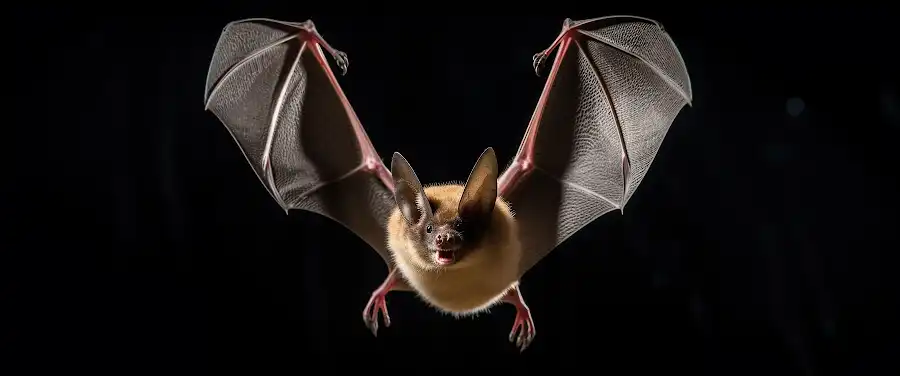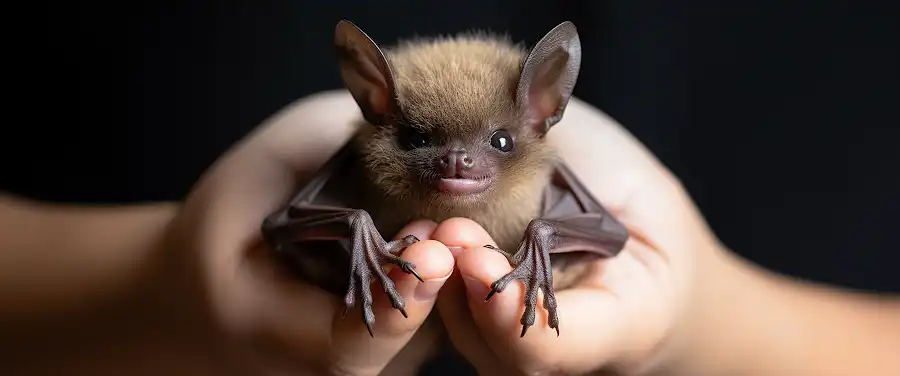
Do you remember the goosebumps you got the last time you heard the squeak of a bat, or saw its silhouette dance against the twilight sky? Reality check – these nocturnal creatures aren’t out to get you. On the contrary, bats and humans have a relationship that’s symbiotic, yet often misunderstood. Bats help control insect populations, and some even act as pollinators. However, when they decide to set up camp in attics, sheds, or other parts of human dwellings, things can get rather batty. That’s where bat control steps in – a practice designed to manage and prevent bat infestations in homes or businesses.
Navigating the landscape of bat control raises a constellation of ethical implications. After all, it’s not about ousting these winged denizens with brute force. It’s about a mindful and respectful eviction that safeguards both human and bat interests. It means asking tough questions – How can we deal with a bat infestation without causing undue harm? What measures can we employ that are effective yet humane? It’s imperative that we understand that bat control isn’t merely about removal but about fostering co-existence.
Bringing humane bat control strategies to the table is more than just an ethical imperative – it’s about acknowledging our shared habitats and ensuring survival on both ends. Exploring the intersection of bat control practices and ethics offers a chance to redefine our relationship with bats – from adversaries to allies. So, as we delve deeper into this batty issue, get ready for a fresh perspective that shakes up old misconceptions and highlights the importance of ethical bat removal. Now that the stage is set, buckle up as we take a closer look at why bats are often seen as pests.
What Makes Bat Control an Ethical Issue?

When discussing the ethics of bat removal and control, it’s essential to acknowledge the crucial ecological role bats play. Bats help preserve biological diversity by serving as pollinators and insect controllers. By eliminating pests, they also significantly assist in agriculture.
Iconic international wildlife acts, such as the Endangered Species Act and the Migratory Bird Treaty Act, legally protect bats. These regulations underscore the important ethical perspective in considering conservation efforts. Humane bat control methods are therefore paramount, striking the right balance between ensuring human safety and maintaining bat populations.
According to Bat Conservation International, at least 20 species of bats are classified as being ‘on the brink of extinction.’ This highlights the risk faced if unethical methods are embraced.
Why Are Some Bat Control Methods Unethical?
Unfortunately, inhumane bat control practices still exist, such as lethal trapping and poisoning bats. These methods pose a significant threat to bat populations. Moreover, the unethical nature of these methods also has profound effects on our environment and biodiversity.
A study from the University of California, Santa Cruz reveals that the current rate of biodiversity loss is hundreds of times higher than the natural extinction rate. Consequently, these ruthless tactics can push species closer to the brink of extinction, forever altering ecosystems and detrimentally impacting biodiversity.
What Criteria Define Ethical Bat Control?
Ethical bat control embodies principles such as non-lethality, avoidance of injury, and a conscious effort to minimize distress. A high regard for bat welfare during the control efforts is imperative.
These principles aren’t only morally right but also legally binding. Individuals, businesses, and organizations are obligated to minimize suffering and preserve wildlife under various wildlife laws. Every contact we have with nature should be ethically driven: considering the welfare of the creatures involved and the preservation of the delicate balance of ecosystems.
In our quest to mitigate the inconveniences bats might pose, let’s not lose sight of their importance to the environment and biodiversity. Properly adhering to ethical bat control principles is not just a matter of lawfulness; it is a testament of our shared responsibility towards a sustainable future for all species.
With a sense of responsibility guiding us, we can transition towards discussing ‘ What Are Ethical Methods for Bat Control?‘ next.
What Are Ethical Methods for Bat Control?

Ethical bat control methods are an important aspect of wildlife conservation. As the public grows increasingly sensitive to the plight of our diverse wildlife, it’s now critical to consider approaches that are not only effective but also humane. Ethical control measures are rooted in practices that are non-lethal, aiming to manage bat populations and behavior without harm. These methods include deterrence, the use of bat exclusion devices, and professional bat control services.
Bats, being an integral part of our ecosystem, assist in pollination, seed dispersal, and insect control. Bat deterrence involves discouraging bats from particular areas without physically harming them. Commonly, this involves using bright lights and loud sounds to deter bats from roosting. However, these methods should be used cautiously to avoid severe stress or disruption of bat behaviors.
Bat exclusion devices operate on a simple but ingenious principle: allowing bats to exit a roosting site, but preventing them from re-entering. These devices are considered humane as they do not cause harm to bats. Instead, they simply encourage bats to find alternative roosting sites.
The role of professional bat control services should not be underestimated in wildlife ethics. These services possess the expertise and understand the laws linked to wildlife control and explicitly bat management. They are often the most effective option for homeowners dealing with persistent bat colonies. Their techniques for bat removal are typically humane and done with extreme care to prevent harm to the animals.
How Effective are Deterrence Methods?
Deterrence methods are incredibly effective when implemented correctly. They shift bat behavior patterns, encouraging them to seek out other spaces for roosting. However, the effectiveness of these methods depends greatly on the knowledge and precision of those implementing them.
While efficient, it should be noted that these methods can have significant impacts on bat behavior. Overuse of deterrents can lead to bats becoming habituated, reducing the effectiveness of the technique. Furthermore, these methods should be viewed in the context of bat health and bat conservation. If improperly applied, deterrents can lead to the disruption of bat populations and potentially contribute to bat decline.
In contrast to inhumane methods, such as killing or trapping, deterrence methods are vastly more ethical and respectful towards the lives of these indispensable creatures.
What is the Role of Bat Exclusion Devices?
Bat exclusion devices are a cornerstone of humane bat control. These devices allow bats to exit a roosting site while preventing re-entry, in effect encouraging them to seek a new habitat. A detailed guide on the installation and maintenance of these devices is available on the Bat Conservation International website. These devices, when used promptly and correctly, present an ethical solution to your bat problems.
The effectiveness of bat exclusion largely depends on the time of year. The best time to exclude bats is either in the spring, before pups are born, or in the late summer and fall, when young bats are capable of flight.
How are Professional Bat Control Services Ethical?
Professional services play an essential role in ethical and effective bat control. They are versed in laws surrounding wildlife control and are often licensed practitioners. Meeting compliance requisites, these professionals play a vital role in promoting humane practices in bat control, thereby safeguarding bat health and conservation.
Professional bat control services often rely on humane procedures, ensuring minimal stress and harm to bats. They maintain safety measures, such as the safe containment and release of bats, in all their operations.
Looking at the aforementioned discussion, it’s clear that all these measures play a crucial role in implementing ethical bat control measures. They strike a balance between human need and wildlife conservation, and in doing so, they set an example for the necessary respect and care we need to extend towards our wildlife.
Stay tuned as we dive into our subsequent topic, ” How Are Bat Control Laws Implemented and Enforced?” and further explore the ethical spectrum of bat control.
To give you an idea of the average costs and types of damage associated with rodent infestations, have a look at the following table:
Conclusion
In summary, we’ve delved into the fascinating and delicate topic of the ethics of bat removal and control. It’s a dance, really, balancing human safety with the careful conservation of bat species. We can’t ignore our responsibility to protect both parties involved – it’s a non-zero-sum game.
But don’t just take what you’ve learned and keep it to yourself – I encourage you actively practice these ethical, humane bat control strategies. As we move further into the 21st century, our urban spaces are encroaching more and more on wildlife habitats. Now, more than ever, ethics in all wildlife control—not just concerning bats—comes front and center.
There’s always something new to learn about these fascinating creatures, and the laws protecting them are ever-changing. So, it’s vital to stay informed. Not just for the bats, but for your safety, too.
Think about this as you encounter bats in your everyday life. Don’t forget, you’re a part of the conversation that decides how we coexist with these animals in a constantly urbanizing world. Ask yourself, “How can I be responsible and respectful in dealing with bats?”
And remember, our relationships with bats won’t change overnight. Just as bats evolve, so too must our knowledge and ethical practices. Yes, bats can pose a nuisance, or even a danger, but they also serve essential roles in our ecosystems. In seeking a balance, we’re helping to secure the future for both bats and humans in urban spaces.
That’s our challenge. And certainly, it’s a challenge worth undertaking. Together, let’s build a future where we can all coexist—bats included.



